2019 Subaru Crosstrek Vs Forester: Which Subaru Crossover is Right For You?

If you’re looking to buy an affordable crossover with all-wheel-drive, you might find yourself in a Subaru dealership.
But there are a few overlaps when it comes to their smaller offerings: the Crosstrek and the Forester. Both are billed as small, affordable vehicles that are also practical and versatile, but there are some important differences to note. Here are a few reasons why you’d pick the Crosstrek over the bigger Forester, and some scenarios where the Forester is the better buy.
Get a Quote on a New Subaru Crosstrek or ForesterSpace and Cargo Capacity
Crosstrek: The Crosstrek features 100.9 cubic feet of passenger room, which shrinks to 97.5 cubic feet if you get a model with the moonroof. It also features 39.8 inches of headroom in the front two seats, and 38 inches in the rear. Moonroof equipped models have a bit less headroom, with 37.6 inches in the front and 37.8 inches in the back. Legroom in the front is measured at 43.1 inches, while rear-seat legroom is 36.5. When it comes to cargo room, the Crosstrek is capable of hauling 20.8 cubic feet of goodies with the rear seats in place, or 55.3 cubic feet when you fold the rear seats down. Buyers should also take note of the liftover height, which is 30.9 inches.
ALSO SEE: Subaru Crosstrek Review
Forester: The Forester is a bigger vehicle and boasts bigger numbers in every category, but not by a huge margin. The vehicle features 111.9 cubic feet of passenger volume, which shrinks to 107.8 cubic feet in moonroof-equipped models. The front seat passengers will enjoy 41.2 inches of headroom, while the rear seat passengers make do with 39.6 inches. Like the Crosstrek, the moonroof in the Forester also cuts away headroom, leaving 40.2 inches in the front and 37.7 inches in the rear. Legroom in the front of the Forester isn’t a huge change from the Crosstrek, at 43.3 inches, but the rear seat legroom is up to 39.4 inches. Cargo space in the Forester is significantly improved over the Crosstrek, measuring in at 35.4 cubic feet with the seats up and 76.1 cubic feet with the seats down. The moonroof cuts into that space, leaving you with just 33 cubic feet with the seats up and 70.9 cubic feet with them folded down. Additionally, in comparison to the Crosstrek, the Forester has a lower liftover height.
ALSO SEE: 2019 Subaru Forester Review
Bottom Line: Whether it comes to passenger or cargo space, the Forester is the better choice. While it may seem like the difference in passenger space isn’t huge, you’ll definitely notice the more legroom in the Forester. Furthermore, the cargo capacity of the Forester far surpasses the Crosstrek, and the lower liftover height means that it’ll be easier to load too. Those looking for the maximum space in their crossover should avoid the moonroof though.
Powertrain
Crosstrek: The Crosstrek features a 2.0-liter four-cylinder engine, arranged in a boxer layout, which is to say its a flat engine instead of the typical inline-four format. Boxers allow the vehicle to feature a lower center of gravity. This engine makes 152 horsepower and 145 lb-ft of torque. The engine can be paired with either a six-speed manual transmission or a CVT. The continuously variable transmission can be used in a “manual control mode” that offers seven pre-set gear ratios to switch between using the paddle shifters on the steering wheel.
As mentioned earlier, the power goes to all four wheels thanks to Subaru’s symmetrical all-wheel-drive system. It’s worth mentioning that the all-wheel-drive system works differently depending on the transmission you choose. Manual models feature an even power split between the front and rear wheels, sending 50 percent of the power to the front wheels and 50 percent to the rear. Models equipped with the CVT feature more front bias, meaning 60 percent of the power is sent to the front wheels, and 40 to the rear. The Crosstrek also features X Mode and hill descent control, which help in inclement weather and road conditions. In terms of fuel economy, the manual-equipped Crosstrek averages 25 MPG combined, and the CVT model earns 29 MPG.
ALSO SEE: CVT Transmission Pros and Cons
Forester: The Forester utilizes a similar powertrain but with a bigger engine. This vehicle uses a 2.5-liter boxer four-cylinder engine, which makes 182 hp and 176 lb-ft of torque. Only one transmission is available, a CVT that sends power to all four wheels. Like the Crosstrek, this transmission can shift between seven pre-set gear ratios. It too splits the power between the front and rear axles 60/40 and features X Mode and hill descent control. Higher trim level models feature two settings for X Mode, a normal setting and a more hardcore one that’s suited for deeper and stickier road and off-road conditions. The Forester also features two driving modes: Sport Intelligent and Sport (or Sport Sharp on Forester Sport models), which change the throttle response and transmission behavior. Additionally, the Forester comes with standard engine start/stop, which helps it earn a combined fuel rating of 29 MPG, which is the same as the smaller and less powerful Crosstrek.
Bottom Line: With more power, more drive modes and the same fuel economy, the Forester is the better choice of these two. The only reason you may want the Crosstrek in regards to the powertrain is thanks to the available six-speed manual.
ALSO SEE: Subaru Outback vs Forester: Which Subaru Crossover Is Right for You?
Technology
Crosstrek: The Crosstrek can be had with a lot of technology to help drivers feel safe and concentrate on the task of driving. Premium trim levels with the EyeSight package, or Limited trim level models come with the EyeSight suite of safety systems that includes adaptive cruise control, lane departure and sway warning, and lane keep assist, blind spot detection with lane change assist and cross traffic alert. You can also get high beam assist, steering responsive headlights and reverse automatic braking on the Crosstrek.
Forester: The Forester has many of the same equipment as the Crosstrek but builds upon the smaller vehicle’s offerings. For example, Eyesight is standard on the Forester with automatic pre-collision braking, adaptive cruise control, lane departure and sway warning, lane keep assist, pre-collision throttle management, and lead vehicle start alert. You can add reverse automatic braking and blind spot detection with lane change assist and rear cross traffic alert, and higher trim level models come with high beam assist and steering responsive headlights. The top-of-the-line Touring model emphasizes safety with the DriverFocus system, that uses a driver-facing camera to prevent distracted driving, and can even remember your seat settings.
Bottom Line: Even though both of these vehicles feature Top Safety Pick Plus ratings from the IIHS, the Forester comes with more standard safety technology and the available DriversFocus system, making it the ideal choice when it comes to hauling around your family.
Features
Crosstrek: The Crosstrek’s in-cabin technology isn’t terribly exciting, but the Crosstrek comes standard with a 6.5-inch touchscreen featuring the Starlink infotainment system that includes Android Auto and Apple CarPlay. While things like power locks and windows are expected at this stage, it’s worth pointing out that the Crosstrek can also be paired with an all-weather package that includes handy features such as heated front seats and two rear USB ports. The Limited model, which is the top-of-the-line Crosstrek, features an 8-inch Starlink infotainment system that can be optioned up with navigation and a Harmon/Kardon branded sound system. The Limited also gets a push-button start and a six-way power driver’s seat. The upholstery in the Limited model is leather with orange stitching.
Forester: Beyond its safety equipment, the Forester offers a lot of convenience features. Indeed, the power windows and locks, as well as USB ports, are standard equipment, but there’s more impressive standard technology. All trim levels of the Forester get automatic climate control, while dual-zone climate control is found on the Touring and Limited trims. There’s also available heated front seats and a heated steering wheel while touring models get heated rear seats. Push button start is found on the Sport, Limited and Touring models, and is an option on Premium trims. The large panoramic moonroof is standard on Premium, Sport Limited, and Touring trims. Like the Crosstrek, the Forester comes standard with a 6.5-inch touchscreen infotainment system with Android Auto and Apple CarPlay support, while higher trim level models feature an 8-inch screen with navigation. Finally, Premium models feature cloth seats and a leather-wrapped steering wheel, while Limited models get leather-trimmed upholstery.
Bottom Line: The Forester has more standard equipment, and can be had with more optional extras as well. This is the ideal choice for people looking for more bang for their buck, but the lower starting price and fewer options mean that the Crosstrek is quite accessible, but just not as feature filled as the Forester.
Price
Crosstrek: The 2019 Subaru Crosstrek starts at $22,870 for a 2.0i trim vehicle with a manual transmission. Adding a CVT automatic bumps the price up by $1,000 to $23,870. Premium-trimmed models also feature a 6-speed manual transmission and cost $23,870. Adding a CVT automatic bumps the price up by $1,000 again to $24,870. Finally, the Limited trim comes exclusively with a CVT and costs $28,170. Each trim level can be added upon with optional packages. For example, the base CVT equipped model can be equipped with the $845 EyeSight package. The CVT Premium model can be equipped with the EyeSight, Blind Spot Detection, Rear Cross Traffic Alert package for $1,395, or they can swap the EyeSight in that package for a moonroof for $1,400. Getting both the moonroof and EyeSight in the Premium costs $2,395. Limited models can be equipped with a moonroof for $1,000 or the moonroof can be packaged with the navigation system and upgraded sound system for $2,350. The most loaded and expensive Crosstrek is the Limited with the Moonroof, navigation and sound system, which totals $30,520
Forester: There are five trim levels of the Forester, with the base model starting at $25,270, and only being offered with the $600 alloy wheel option. Premium models will cost $27,670 and feature three option packages: the All-Weather Package ($500), the All-weather package with blind spot detection, rear cross traffic alert, keyless access and push-button start ($1,295) and the the All-weather package with blind spot detection, rear cross traffic alert, keyless access and pushbutton start as well as a power liftgate ($1,845).
The Sport model of the Forester features a unique interior and exterior design with special orange accents and will set you back $29,770. Options for that model are the blind spot detection and rear cross traffic alert, rear automatic braking and the upgraded infotainment system for $795, or that package with the upgraded speakers and power liftgate for $2,045. The Forester Limited starts at $31,770 and has one option package: the upgraded infotainment system with navigation as well as the Harmon Kardon sound system and rear automatic braking for $1,695. Finally, the fully loaded Forester Touring costs $35,270 and has no additional option packages.
Bottom Line: The Crosstrek is much cheaper to start with, and at its most expensive is just $30,520, making it more affordable than the Forester, but the Forester is just $25,270 to start and features more power and space for that price. The fully loaded model is barely $5,000 more than the fully loaded Crosstrek and leaves no option behind, meaning it’s better loaded than even the best Crosstrek. It seems like value is in favor of the Forester.
The Verdict: 2019 Subaru Crosstrek vs Forester
If small size is the only criteria for picking a car, then the smaller Crosstrek is the better choice. In every other aspect, the Forester expands upon the smaller model with more space, more features, better safety equipment, and the same rated fuel economy, for a very small price difference. For more buyers, it’s the ideal pick.

Sami has an unquenchable thirst for car knowledge and has been at AutoGuide for the past six years. He has a degree in journalism and media studies from the University of Guelph-Humber in Toronto and has won multiple journalism awards from the Automotive Journalist Association of Canada. Sami is also on the jury for the World Car Awards.
More by Sami Haj-Assaad





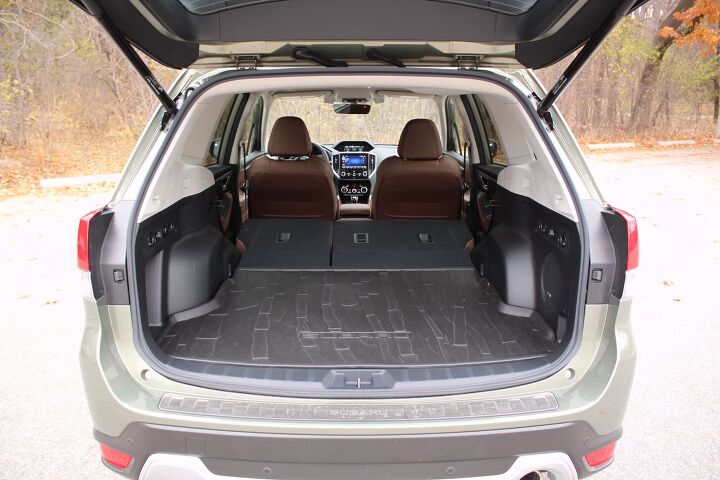



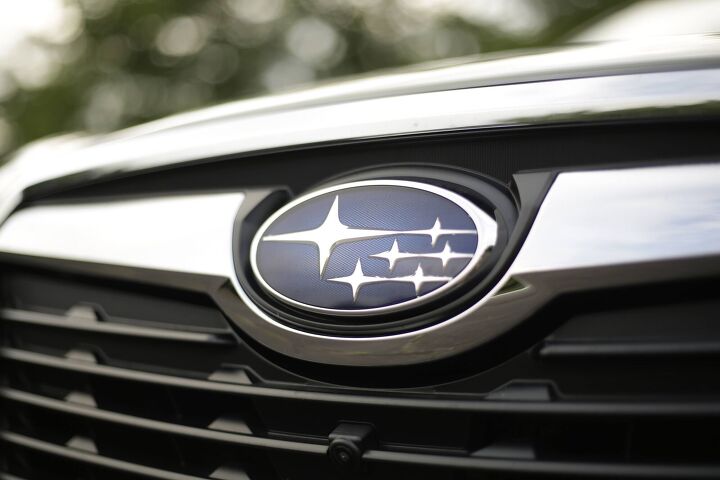


















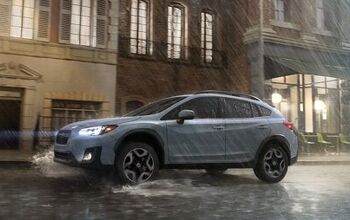
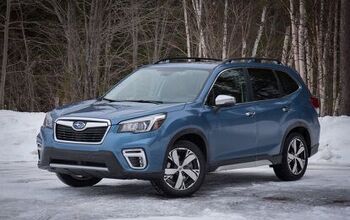

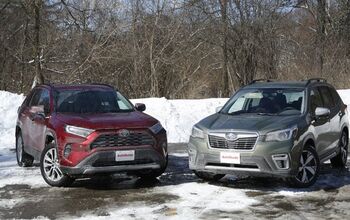
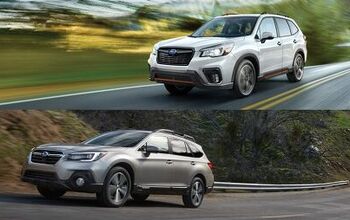
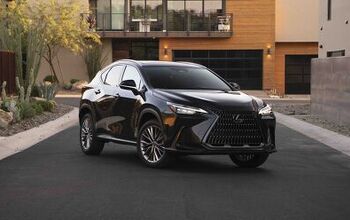
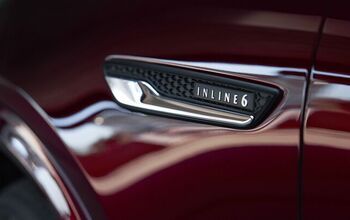

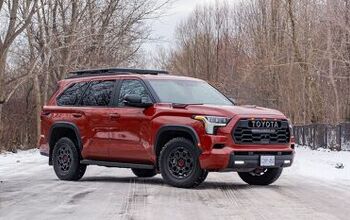
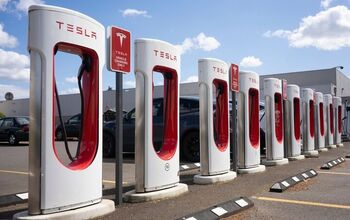



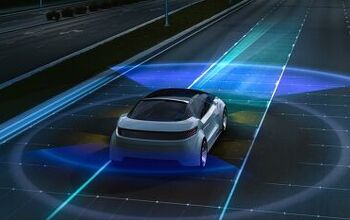
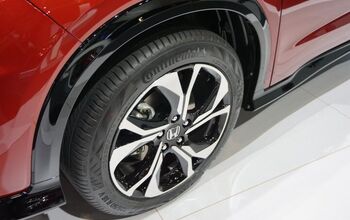
Comments
Join the conversation